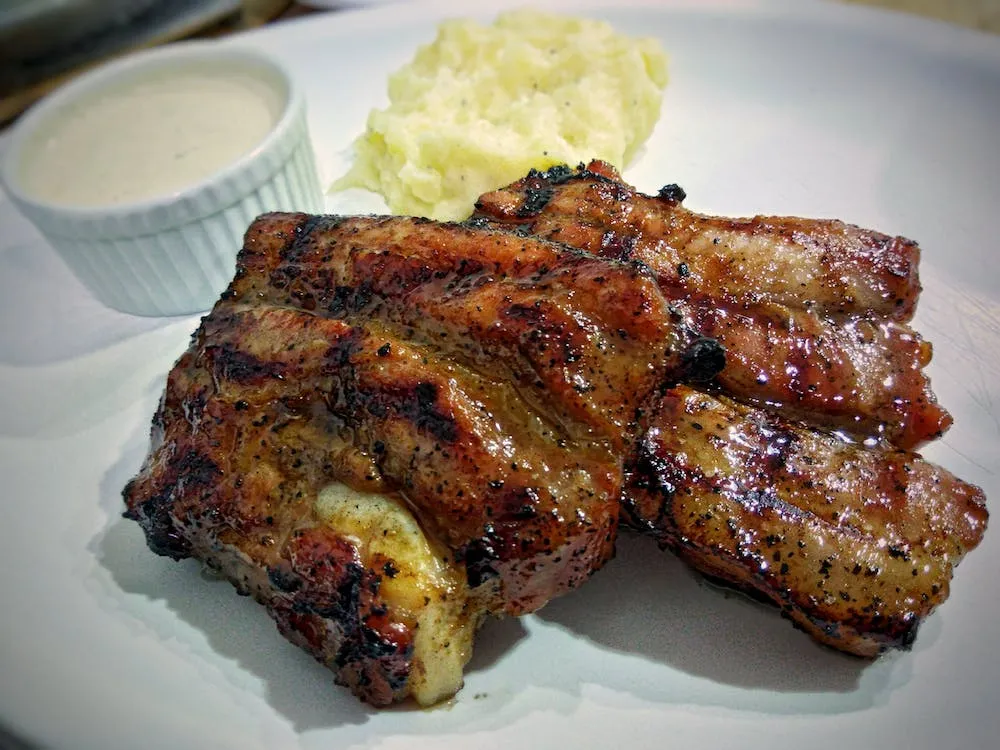Thawing frozen pork shoulder is an essential step in preparing this flavorful cut of meat. When it comes to thawing pork shoulder, there are several safe and effective methods to choose from. It is important to thaw the meat properly to avoid any potential foodborne illnesses.

One of the most common methods for thawing frozen pork shoulder is in the refrigerator. This method requires the most time, but it is also the safest. It is recommended to allow 24 hours for every 5 pounds of meat when using this method. Another safe method is the cold water method, which involves placing the pork in a sealed plastic bag and submerging it in a bowl of cold water. This method takes less time than the refrigerator method, but it requires more attention as the water needs to be changed every 30 minutes. The microwave method is also an option, but it is important to note that the meat should be cooked immediately after thawing.
Why Thawing Frozen Pork Shoulder is Important
Thawing frozen pork shoulder is a crucial step in the cooking process that should not be overlooked. It is important to thaw the meat properly to ensure that it cooks evenly, is safe to eat, and retains its flavor and texture.
When meat is frozen, the water molecules inside the cells expand, causing the cell walls to rupture. This can lead to moisture loss, which can affect the taste and texture of the meat. Thawing the meat properly can help to minimize this moisture loss and preserve the quality of the meat.
In addition, thawing frozen pork shoulder properly is essential for food safety. When meat is frozen, any bacteria or pathogens present in the meat are dormant. However, as the meat thaws, these bacteria can become active again and multiply rapidly, increasing the risk of foodborne illness. Thawing the meat properly can help to prevent the growth of harmful bacteria and ensure that the meat is safe to eat.
There are several methods for thawing frozen pork shoulder, including thawing in the refrigerator, in cold water, or in the microwave. Each method has its own advantages and disadvantages, and it is important to choose the method that is best for your needs.
Thawing in the refrigerator is the safest method, as it allows the meat to thaw slowly and evenly while remaining at a safe temperature. Thawing in cold water is a faster method, but it requires more attention to ensure that the water stays cold and the meat stays submerged. Thawing in the microwave is the fastest method, but it can lead to uneven thawing and can affect the texture of the meat.
Overall, thawing frozen pork shoulder properly is essential for safe and delicious cooking. By following the proper thawing methods, you can ensure that your meat is safe to eat and retains its flavor and texture.
Thawing Methods for Frozen Pork Shoulder
When it comes to thawing frozen pork shoulder, there are three safe and effective methods to choose from. Each method has its own advantages and disadvantages, so it’s important to choose the one that works best for your specific situation. Here are the three methods, along with some tips and tricks to make the process as smooth as possible.
Thawing in the Refrigerator
Thawing pork shoulder in the refrigerator is the safest and most recommended method. Simply place the frozen pork shoulder in a container or on a tray and put it in the refrigerator. Allow 24 hours for every 5 pounds of pork. This method is ideal if you’re planning ahead and have plenty of time to spare.
One advantage of thawing pork shoulder in the refrigerator is that it helps prevent any cross-contamination if the drippings should leak out of the pan. Additionally, thawing in the refrigerator allows the pork to thaw evenly and slowly, which helps preserve its texture and flavor.
Thawing in Cold Water
If you don’t have enough time to thaw pork shoulder in the refrigerator, you can also thaw it in cold water. This method is faster than thawing in the refrigerator, but it requires more attention. To thaw pork shoulder in cold water, place the frozen pork shoulder in a sealed plastic bag and submerge it in a bowl of cold water. Change the water every 30 minutes, and allow 30 minutes of thawing time for each pound.
Thawing pork shoulder in cold water is a good option if you need to thaw the meat quickly and don’t have access to a microwave. However, it’s important to note that this method can increase the risk of cross-contamination if the bag leaks or if the water isn’t changed frequently enough.
Thawing in the Microwave
Thawing pork shoulder in the microwave is the fastest method, but it’s also the riskiest. To thaw pork shoulder in the microwave, place the frozen pork shoulder on a microwave-safe plate and use the defrost setting. Be sure to follow the manufacturer’s instructions for your specific microwave, as the defrost settings can vary.
Thawing pork shoulder in the microwave is a good option if you’re in a hurry, but it can also result in uneven thawing and can partially cook the meat if you’re not careful. Additionally, foods thawed in the microwave should be cooked immediately after thawing.
Overall, it’s important to choose the thawing method that works best for your specific situation. Whether you choose to thaw in the refrigerator, in cold water, or in the microwave, be sure to follow safe food handling practices to prevent any risk of foodborne illness.
Tips for Thawing Frozen Pork Shoulder
Thawing frozen pork shoulder is an important step in preparing this delicious cut of meat for cooking. Here are some tips to help you safely and effectively thaw your frozen pork shoulder:
-
Plan ahead: The best way to thaw frozen pork shoulder is to plan ahead and allow enough time for it to thaw in the refrigerator. For every five pounds of meat, allow 24 hours of thawing time in the refrigerator. This slow and steady method is the safest way to thaw meat and will help to prevent any potential foodborne illnesses.
-
Use the cold water method: If you need to thaw your pork shoulder more quickly, you can use the cold water method. Place the frozen meat in a sealed plastic bag and submerge it in a bowl of cold water. Change the water every 30 minutes and allow 30 minutes of thawing time for each pound of meat. This method is faster than the refrigerator method but requires more attention and monitoring.
-
Avoid thawing at room temperature: Never thaw frozen pork shoulder at room temperature or on the counter. This can lead to bacterial growth and increase the risk of foodborne illness.
-
Trim excess fat: Before thawing your pork shoulder, consider trimming any excess fat. This will help to reduce the overall cooking time and make it easier to handle and prepare.
-
Seasoning rub: Consider using a seasoning rub to add flavor to your pork shoulder. A simple rub of salt, black pepper, garlic powder, and cumin can add a delicious kick to your dish. You can also add brown sugar and yellow mustard for a sweeter flavor.
-
Rest meat: After thawing your pork shoulder, let it rest at room temperature for 30 minutes before cooking. This will help to bring the meat to room temperature and ensure more even cooking.
-
Cooking methods: Pork shoulder can be cooked in a variety of ways, including grilling, roasting, smoking, and stewing. Consider using a wire rack or sheet pan lined with aluminum foil or paper towels to help prevent sticking and make clean-up easier.
-
Storage: If you have leftover cooked pork shoulder, it can be stored in an airtight container or freezer paper for up to six to eight months. Raw pork shoulder should never be refrozen once it has been thawed.
Thawing frozen pork shoulder is an important step in ensuring a safe and delicious meal. By following these tips, you can thaw your pork shoulder safely and effectively, and enjoy it in a variety of recipes and cooking methods.
Cooking Frozen Pork Shoulder
When it comes to cooking frozen pork shoulder, there are a few methods that work well. The most important thing to remember is to thaw the meat properly and safely before cooking. Here are three cooking methods that work well for thawed or frozen pork shoulder.

Roasting
« Where Should You Probe a Brisket? A Guide to Perfectly Cooked Meat
How to Prevent Chicken from Sticking to the Grill: Tips and Tricks »
Roasting is a great way to cook a whole pork shoulder. To cook a frozen pork shoulder in the oven, first, preheat the oven to 325°F. Remove the pork shoulder from the freezer and place it in a large bowl. Fill the bowl with cold water and let the pork shoulder thaw for 30 minutes per pound.
Once the pork shoulder is thawed, remove it from the water and pat it dry with paper towels. Season the pork shoulder with your favorite dry rub or marinade and place it in a roasting pan. Roast the pork shoulder in the oven for 20 minutes per pound, or until the internal temperature reaches 145°F. Let the pork shoulder rest for 10 minutes before slicing and serving.
Slow Cooking
Slow cooking is another great way to cook a frozen pork shoulder. To cook a frozen pork shoulder in a slow cooker, first, remove the pork shoulder from the freezer and place it in a large bowl. Fill the bowl with cold water and let the pork shoulder thaw for 30 minutes per pound.
Once the pork shoulder is thawed, remove it from the water and pat it dry with paper towels. Season the pork shoulder with your favorite dry rub or marinade and place it in the slow cooker. Cook the pork shoulder on low for 8-10 hours, or until the internal temperature reaches 145°F. Let the pork shoulder rest for 10 minutes before slicing and serving.
Grilling
Grilling is a great way to cook a thawed or frozen pork shoulder. To cook a frozen pork shoulder on the grill, first, remove the pork shoulder from the freezer and place it in a large bowl. Fill the bowl with cold water and let the pork shoulder thaw for 30 minutes per pound.
Once the pork shoulder is thawed, remove it from the water and pat it dry with paper towels. Season the pork shoulder with your favorite dry rub or marinade and place it on the grill. Grill the pork shoulder over indirect heat for 20 minutes per pound, or until the internal temperature reaches 145°F. Let the pork shoulder rest for 10 minutes before slicing and serving.
No matter which cooking method you choose, make sure to always thaw frozen pork shoulder properly and safely before cooking. And if you have leftover pulled pork, you can freeze it for later use or reheat it for a quick and easy meal.













